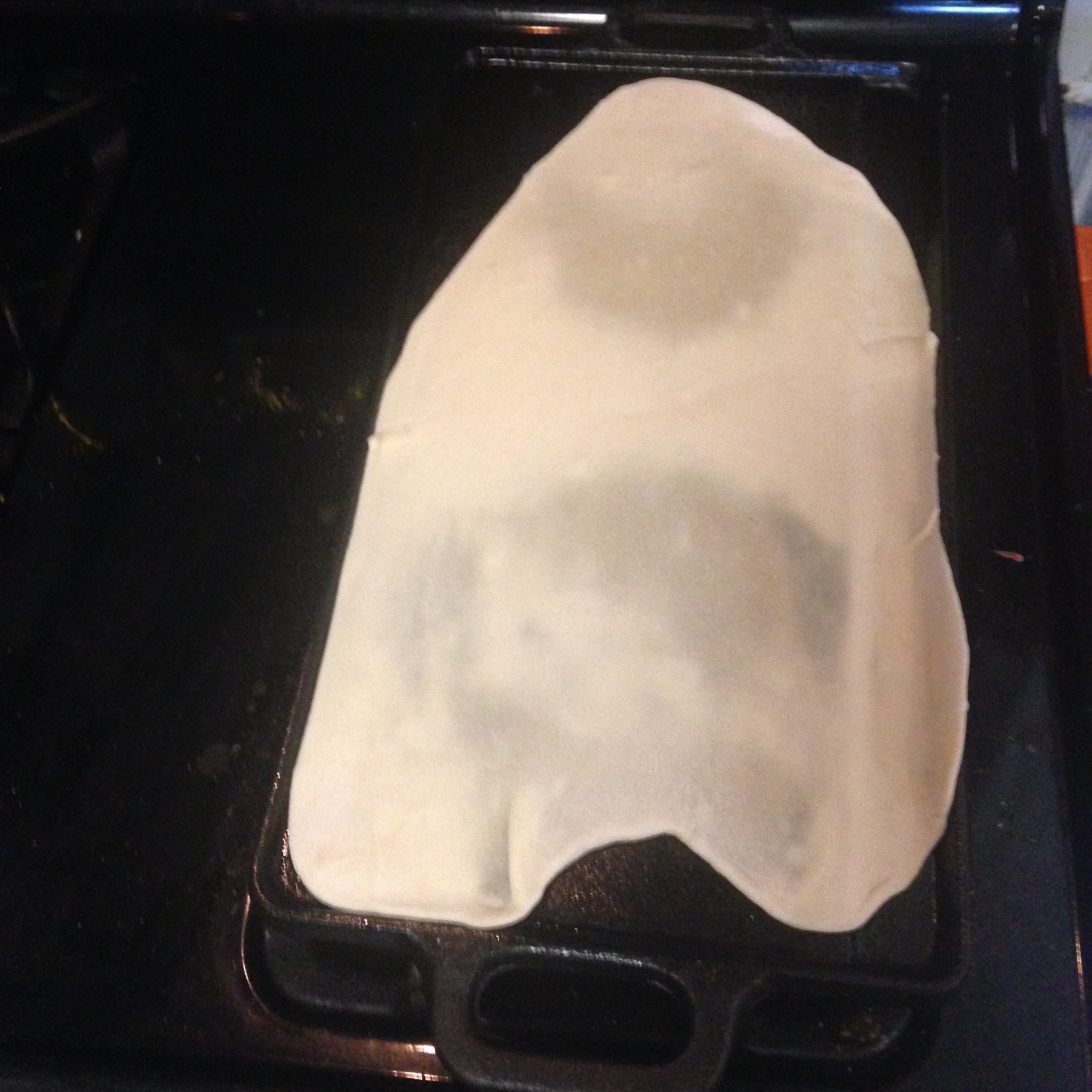Experiment 1, griddled vs. oiled steamed noodles in Mongolian tsuivan
For my first experiment I decided to make tsuivan, a Mongolian noodle dish with lamb and vegetables I was unfamiliar with until my trip to Asian Grill Mongol Xool / Asian Grill/ Togi's Mongolian Cuisine (Oakland)
The noodles are unusual in that they are cooked from raw by steaming over the cooking stew of the lamb/carrot/cabbage mixture. It seems like an efficient method of cooking in a single pot on the central stove in a ger. After searching for recipes and viewing may videos, it seems that the noodle method is either to oil the noodle sheet well, then cut into slivers, or to briefly griddle the noodle sheet to dry it out before cutting and steaming. This is backed up by the recipe here:
which gives the griddled noddles the name tasalsan guril.
I tried out both methods, and greatly prefer the tasalsan guril. They turned out with the flavor of a fresh noodle, but with more of a hint of the firmer texture of dried noodles. They easily stayed separated, despite me not oiling them before steaming. The oiled noodles had the slightly gummy texture I find in a lot of handmade noodles. Though most uncoiled completely, I kind of liked the unevenly thick bits of where a couple layers stuck together.
I made the noodles with King Arthur Bread Flour (12.7% protein). I mixed 150 g water 300 g flour (33% hydration) in a food processor for a minute or two, then rested overnight. I griddled one sheet (unoiled) over medium heat just until it started to turn color (a bit translucent, then flipped it and went a minute of so more.
The oiled noodles took quite a bit of oil to be able to spread it over the whole sheet, and after cutting they seemed like they would forever be blobs rather than uncoil as noodles, but after 15 minutes of steaming they did uncoil.
The recipe above was a bit bland, and needed quite a bit of salt and pepper, and even some soy sauce added by a couple guests. We tried our first round just a bit after mixing the noodles in to the lamb mixture, as is shown in most videos I’ve watched, and suggested in the recipe above.
I turned down the heat on both pans, hoping to get some crisp noodles for round 2, but they crisped little, and stuck quite a bit. The most appealing aspect of the noodles at Asian Grill was the somewhat charred edges on many of the noodles, served on a sizzling platter. To try to achieve this, I let the noodles cool, which helped them unstick from their pans (though the gummier oiled variety had some irreversible stickers), and heated up a cast iron skillet. The tasalsan guril had no issues with sticking, even without any added oil, but they blackened more quickly than they crisped, though there were some nice crispy edges. The oiled noodles seemed prone to sticking, so I added some extra oil, and these achieved some degree of browning, but not much crisping.
It’s interesting to me that the characteristic I liked best about the version I had at Asian grill isn’t described or attempted in any recipes I’ve come across online, but I’m happy to have learned this griddling technique, and will likely use it in the future when I want a fairly toothsome fresh noodle.






